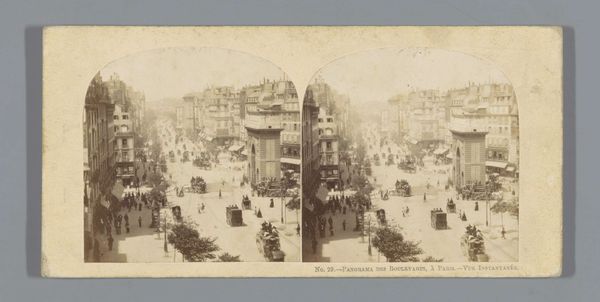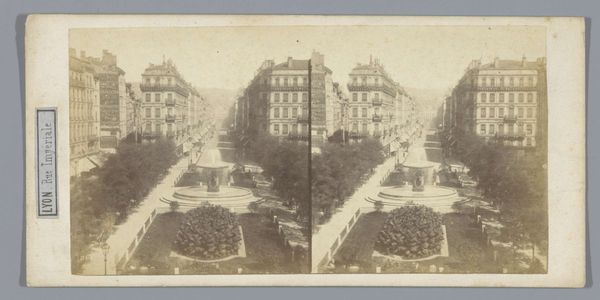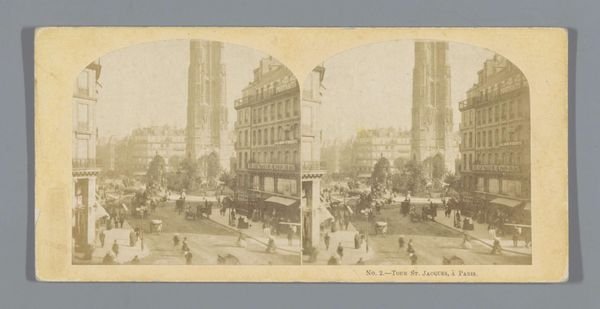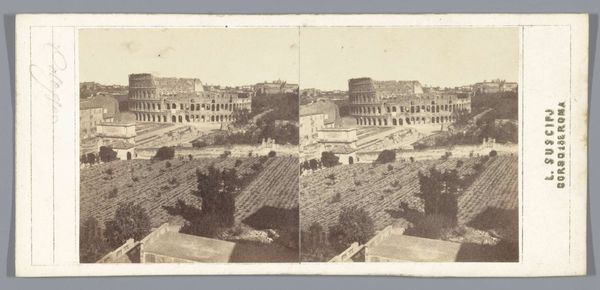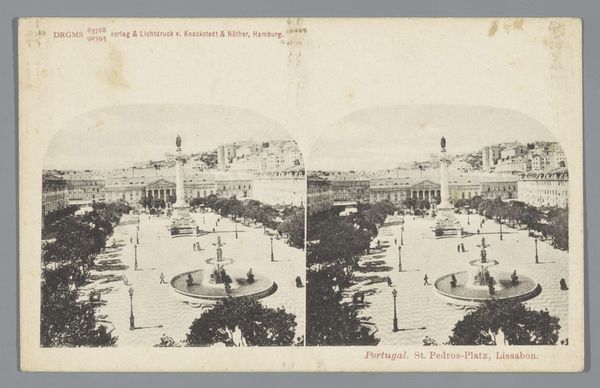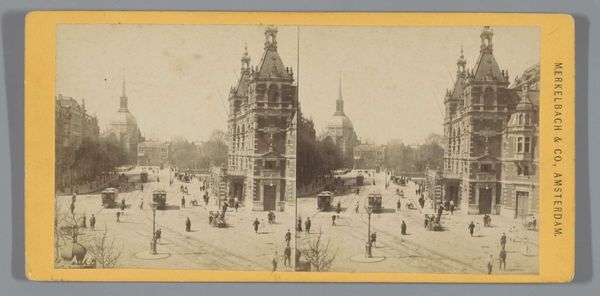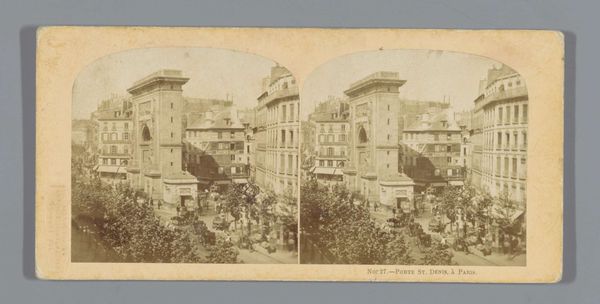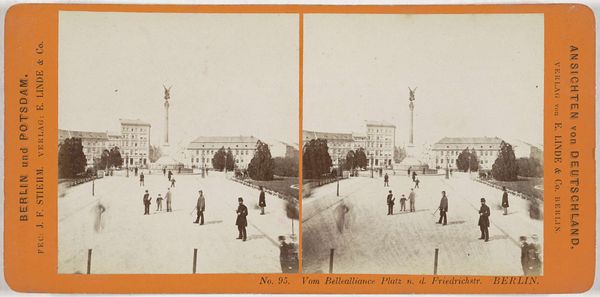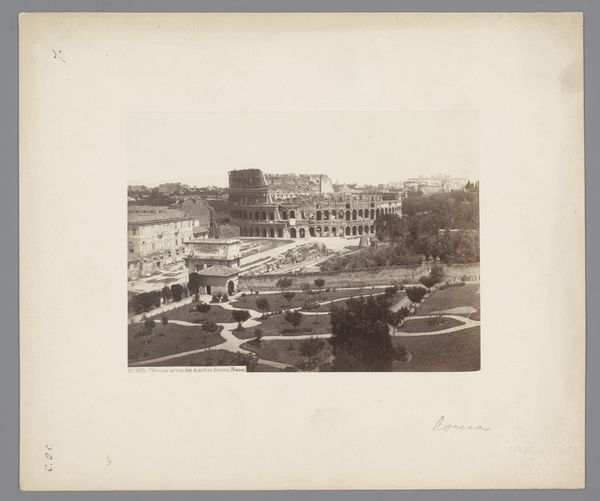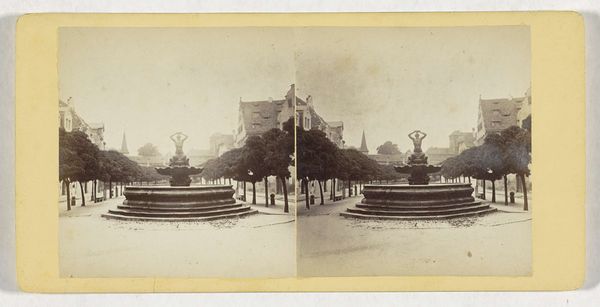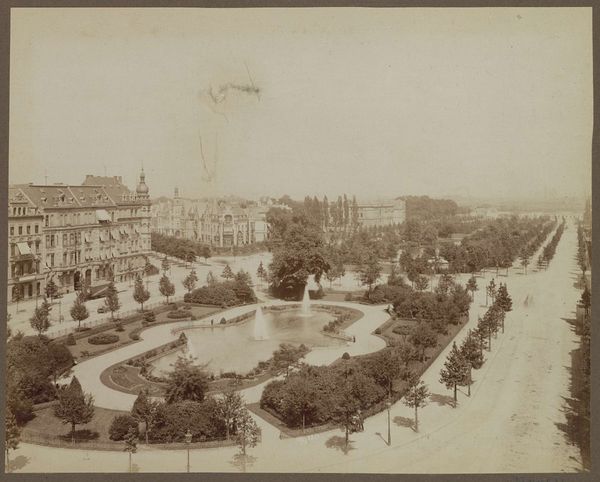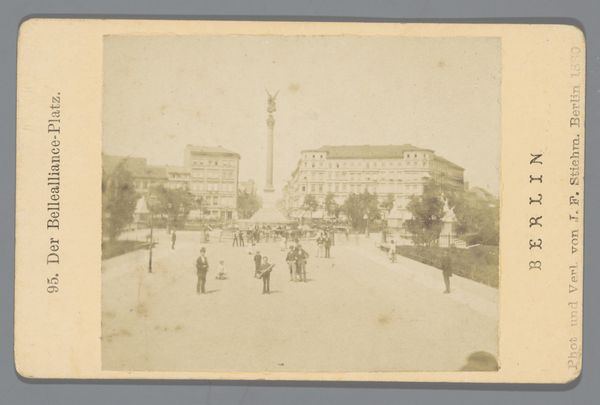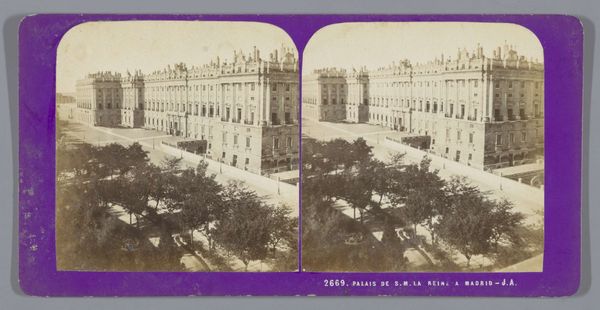
print, photography
#
pictorialism
# print
#
landscape
#
street-photography
#
photography
#
cityscape
#
realism
Dimensions: height 88 mm, width 178 mm
Copyright: Rijks Museum: Open Domain
This stereoscopic photograph of Place Kléber in Strasbourg was captured by John Fillis Jarvis in the late 19th or early 20th century, using a twin-lens camera to create a sense of depth. The production of stereo cards like these involved a combination of skilled labor and industrial processes. Photographers like Jarvis captured the images, but the printing and distribution were often handled by large publishing houses, like F.F. Jarvis, or Underwood & Underwood. The albumen print process itself required careful chemical preparation and precise timing, transforming a negative image into a positive one on paper. Stereo cards were a form of mass media, bringing distant places and events into people's homes, and their popularity reflects the rise of consumer culture during the Industrial Revolution. It is an object made for mass consumption, yet it holds a record of a specific place and time. Looking at the card, one can appreciate how the convergence of art, industry, and commerce shaped our understanding of the world around us.
Comments
No comments
Be the first to comment and join the conversation on the ultimate creative platform.
